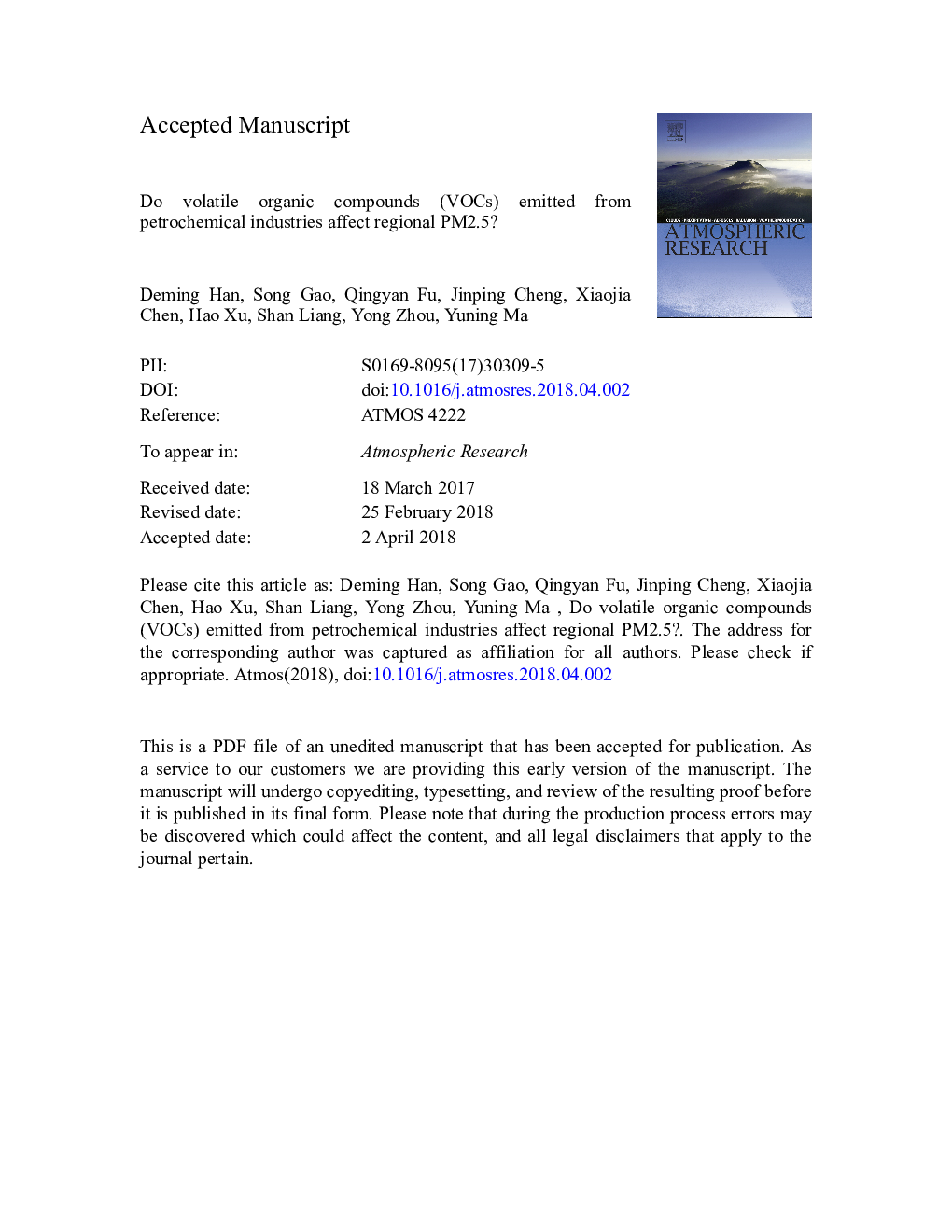| Article ID | Journal | Published Year | Pages | File Type |
|---|---|---|---|---|
| 8864598 | Atmospheric Research | 2018 | 21 Pages |
Abstract
Petroleum related emissions are the major anthropogenic sources of volatile organic compounds (VOCs), which served as important precursors for secondary organic aerosol (SOA). However, little is known about the relationship among VOCs emissions from petrochemical industries, SOA formation, and regional PM2.5. In this paper, VOCs emitted from a petrochemical industry in Yangtze River Delta (YRD, China) were continuously monitored by an online gas chromatography-photo ionization detector/flame ionization detector (GC-PID/FID) system. Results showed that the total concentration of 68 VOCs species was 151.0â¯Â±â¯155.6 ppbv, and ethylene, ethane, 2-methylpentane, chloroform, 2,3-dimethyl-butane and propane were the richest species. SOA yield calculated by time-resolved approach was 7.18â¯Â±â¯10.97â¯Î¼gâ¯mâ3, accounted for 3.35-86.4% of the corresponding PM2.5 concentration, which was a bit higher than previously reported values. VOCs-sensitiveness (VOCs-S) coefficient was adopted to investigate the quantitative relationship between VOCs and PM2.5, found VOCs were more sensitive to PM2.5 in clean domains than in polluted domains. An exponential function was fitted (yâ¯=â¯3.94x0.293 - 3.62, r2â¯=â¯0.816) between VOCs-S coefficient versus specific-to-background PM2.5 ratio for aromatic hydrocarbon. VOCs emitted from petrochemical industry had influence on regional PM2.5 in this study, and reducing petrochemical emissions might be effective in alleviating haze episodes.
Keywords
Related Topics
Physical Sciences and Engineering
Earth and Planetary Sciences
Atmospheric Science
Authors
Deming Han, Song Gao, Qingyan Fu, Jinping Cheng, Xiaojia Chen, Hao Xu, Shan Liang, Yong Zhou, Yuning Ma,
